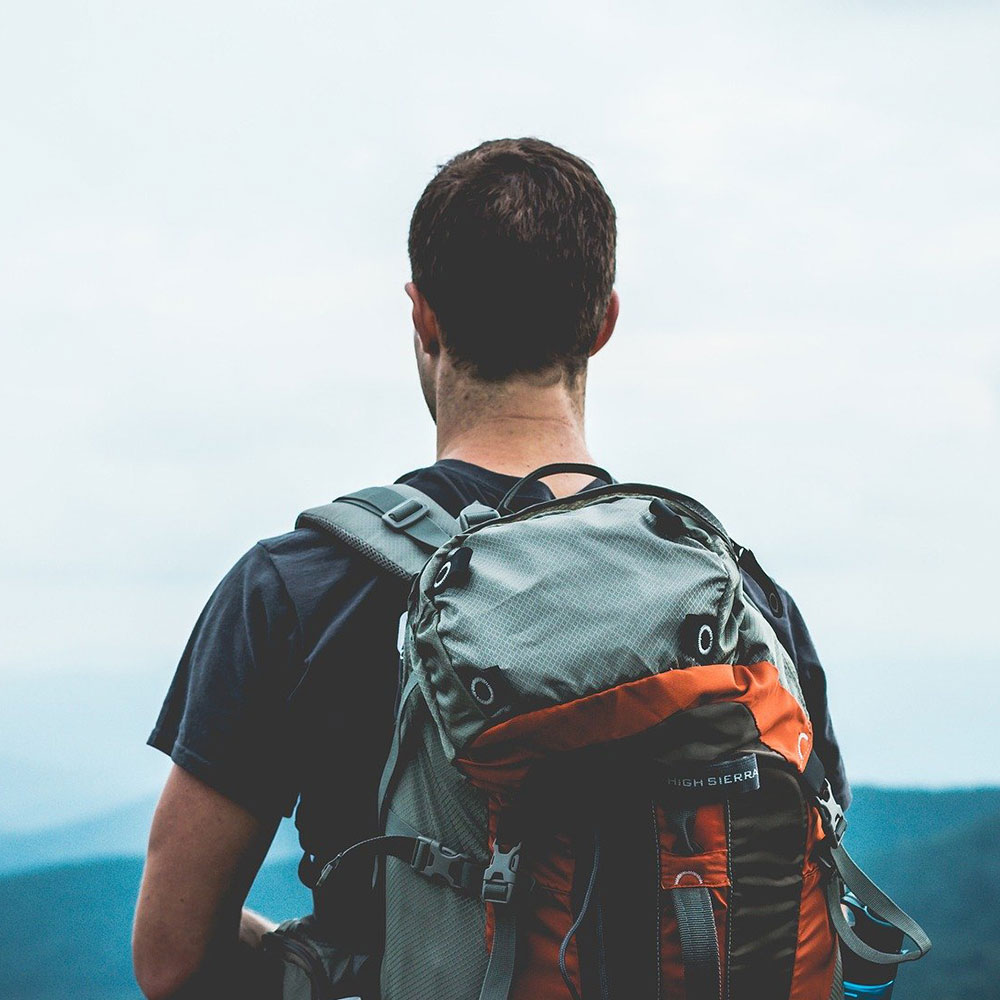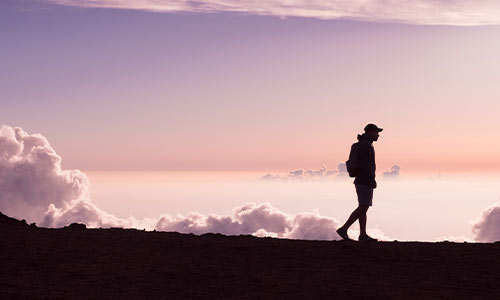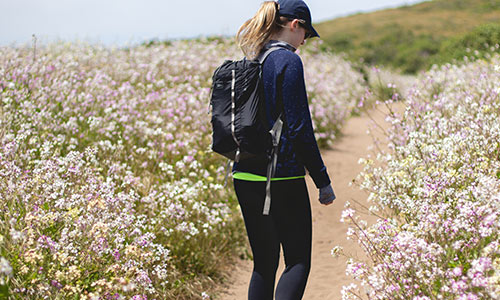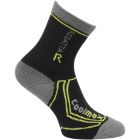A Quick Guide to Prevent Blisters
Author

Javier Olivo is a blogger and a writer by heart. In the past, Javier worked as a woodcarver in a furniture store in his hometown. Being exposed to the outdoors, he often likes to give advice to people who prefer trekking in the woods. During his free time, Javier loves going to the gym and playing football.
Do you often get blisters when you hike or go for a walk? There are a lot of ways to prevent them. Once you get the hang of it, it gets easier to take care of them. Humans have been the first ones to evolve when it comes to providing protection against primeval terrain. Today, blisters have evolved to one of the most common types of injuries to occur to hikers.
There are a few things to consider while dealing with blisters:
Prevent them from forming: If you have good footwear and have broken in, you can take care of your foot in a way that blisters do not get formed. A thin lining under the boots, most preferably socks are the perfect covert along with a blister bandage which can cover the space properly.
Care for them when they worse: A blister-size hole should be cut along with the protection to avoid draining if possible. You can dress it like a wound if it pops.
Know what causes them: Mostly, heat, moisture, etc. Are the problems which cause blisters.

What is the main cause of blisters?
Direct friction: Any place where there is shearing force, the skin would slide and cause blisters. This might also happen inside the boot, or the heel, where you have worn socks or gloves. Eventually, the epidermis separates and the fluid enters the space, which causes blisters.
Pressure: Pressure is one of the important reasons as to why blisters occur. The wrinkles in your sock can create friction which causes pressure points. Eventually, it causes blisters.
Moisture: moisture is another important reason as to why blisters occur. It is more susceptible to damage when friction occurs and should be taken care of immediately.
How do we prevent blisters?
One of the easiest way to treat blisters is you can monitor it from time to time as it heals while you take appropriate measures. Here are some of the measures which can help prevent blisters and help you take care of it:
- Wear proper socks: While hiking, the number one rule is to avoid wearing improper socks or clothing. Avoid cotton which can retain moisture. You can wear synthetic or wool instead and make sure that they fit properly. You can also wear liner socks which can help wick away moisture easily. Double socks also perform the same type of function.
- Wear proper fitting boots: If you have not broken into the boots perfectly, new footwear can cause a lot of problems. The foundation of blister prevention is to get the right type of fit that can make your trip far better in terms of the comfort level.
- Change to dry socks: If our socks get wet during hiking, it is important to change into dry socks which come handy while you cross the stream or go into areas which are marshlands or wet regions.
- Use tape: There are studies that show that you can use tear-to-size paper which is also known as the surgeon’s tape to cover the blister. It can act as a gentle adhesive which can be useful in the long run.

How do we treat a blister?
You can try one of the following options to treat a blister:
Use blister bandages, gels, etc.: If you are going for a long adventure, you can make use of bandages, gels that can soothe the area well by cooling it off.
Drain the blister, as per requirements: The blister should be released off its liquid so that it does not get infected. However, if there is a large blister, it is necessary not only to drain it but also to wash it with an antibiotic soap.
Follow the aforementioned rules to prevent blisters and to take care of it.
-
 Regatta Boys & Girls 2 Season Coolmax Walking Hiking Socks£7.23 to £9.83RRP £17.50 Save Up To £10.27
Regatta Boys & Girls 2 Season Coolmax Walking Hiking Socks£7.23 to £9.83RRP £17.50 Save Up To £10.27
Author

Javier Olivo is a blogger and a writer by heart. In the past, Javier worked as a woodcarver in a furniture store in his hometown. Being exposed to the outdoors, he often likes to give advice to people who prefer trekking in the woods. During his free time, Javier loves going to the gym and playing football.
Categories
- Sport (28)
- Product Reviews (3)
- Team Outdoor Look (7)
- Mike Wild (2)
- Mike Payton (2)
- Suse Hammond-Pears (3)
- Snowboarding (12)
- Latest Offers (105)
- Shop Talk (1)
- Competitions (7)
- Walking (413)
- Lifestyle Fashion (8)
- Travel (86)
- Kit Guides (176)
- Workwear Clothing (6)
- Safety Workwear (4)
- Health/Fitness (289)
- Skiing (91)
- Great Outdoors (1316)
- Cycling (92)
- January 2025
- December 2024
- November 2024
- October 2024
- September 2024
- August 2024
- July 2024
- June 2024
- May 2024
- April 2024
- March 2024
- February 2024
- January 2024
- December 2023
- November 2023
- October 2023
- September 2023
- August 2023
- July 2023
- June 2023
- May 2023
- April 2023
- March 2023
- February 2023
- January 2023
- December 2022
- November 2022
- October 2022
- September 2022
- August 2022
- July 2022
- June 2022
- May 2022
- April 2022
- March 2022
- February 2022
- January 2022
- December 2021
- November 2021
- October 2021
- September 2021
- August 2021
- July 2021
- June 2021
- May 2021
- April 2021
- March 2021
- February 2021
- January 2021
- December 2020
- November 2020
- October 2020
- September 2020
- August 2020
- July 2020
- June 2020
- May 2020
- April 2020
- March 2020
- February 2020
- January 2020
- December 2019
- November 2019
- October 2019
- September 2019
- August 2019
- July 2019
- June 2019
- May 2019
- April 2019
- March 2019
- February 2019
- January 2019
- December 2018
- November 2018
- October 2018
- September 2018
- August 2018
- July 2018
- June 2018
- May 2018
- April 2018
- March 2018
- February 2018
- January 2018
- December 2017
- November 2017
- October 2017
- September 2017
- August 2017
- July 2017
- June 2017
- May 2017
- April 2017
- March 2017
- February 2017
- January 2017
- December 2016
- November 2016
- October 2016
- September 2016
- August 2016
- July 2016
- June 2016
- May 2016
- April 2016
- March 2016
- February 2016
- January 2016
- December 2015
- November 2015
- October 2015
- September 2015
- August 2015
- July 2015
- June 2015
- May 2015
- April 2015
- March 2015
- February 2015
- January 2015
- December 2014
- November 2014
- October 2014
- September 2014
- August 2014
- July 2014
- June 2014
- May 2014
- April 2014
- March 2014
- February 2014
- January 2014
- December 2013
- November 2013
- October 2013
- September 2013
- August 2013
- July 2013
- June 2013
- May 2013
- April 2013
- March 2013
- February 2013
- January 2013
- December 2012
- November 2012
- October 2012
- September 2012
- August 2012
- July 2012
- June 2012
- May 2012
- April 2012
- March 2012
- February 2012
- January 2012
- December 2011
- November 2011
- October 2011
- September 2011
- August 2011
- May 2010
- April 2010
- March 2010
- February 2010
- January 2010
- November 2009
- October 2009
- September 2009


Submit a Comment